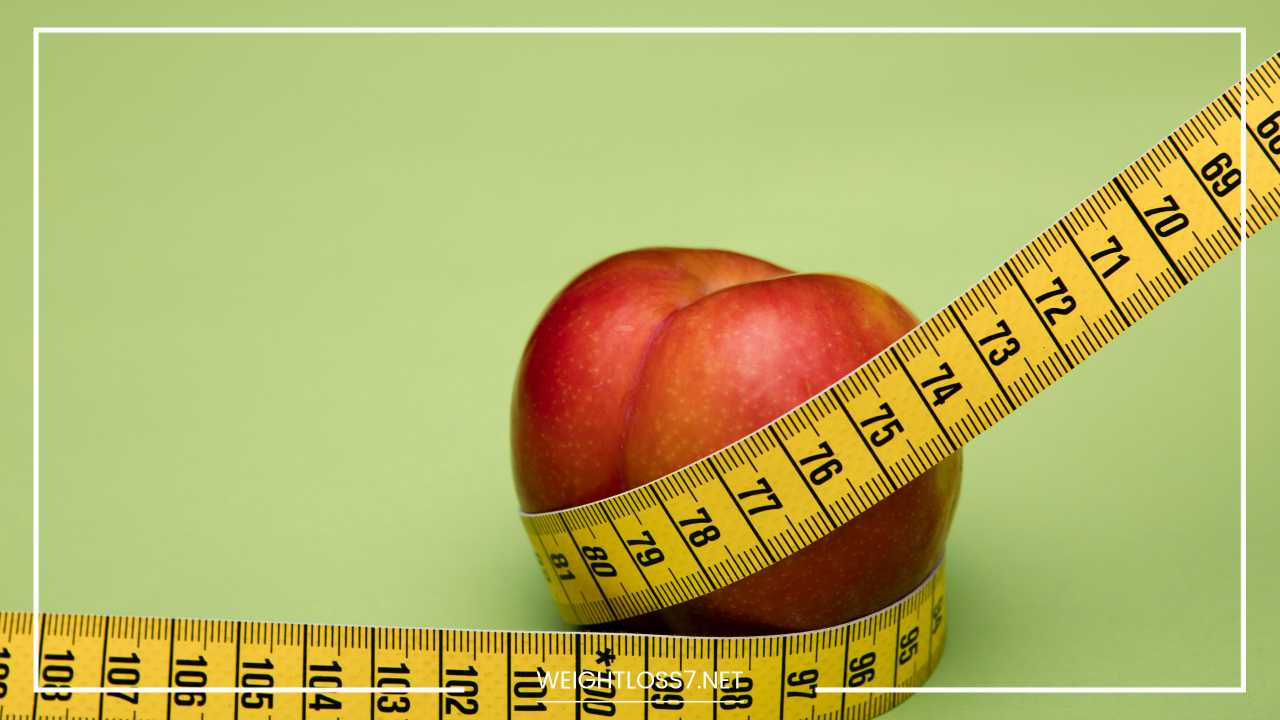Diet and Weight Loss

Diet and Weight Loss
Diet and Weight Loss: Navigating the Path to a Healthier You
Achieving and maintaining a healthy weight is a journey shared by millions around the globe—one often fueled by the desire for better health, increased vitality, improved self-confidence, and a reduced risk of chronic illnesses.
While physical activity plays an essential role in overall well-being, the foundation of effective, long-term weight management is rooted in diet. What we eat—and how we eat—holds the power to transform not just our bodies, but our lives.
This article takes a comprehensive look at the pivotal connection between diet and weight loss, breaking down the science behind how food influences body composition, metabolism, and energy balance.
We’ll also explore the principles that underpin successful weight management, debunk common myths and fad-driven misconceptions, and evaluate a range of popular dietary strategies—from low-carb and intermittent fasting to plant-based and Mediterranean approaches.
Most importantly, we’ll provide practical guidance to help you develop a personalized, sustainable approach that aligns with your goals, preferences, and lifestyle.
Whether you’re just starting your weight loss journey or seeking to fine-tune your current strategy, understanding the nutritional landscape is key to making informed, confident choices that yield lasting results.
The Fundamental Principle: Energy Balance
At the heart of every successful weight loss journey lies one essential truth: the principle of energy balance.
This concept, rooted in the laws of thermodynamics, explains how your body regulates weight based on the relationship between calories consumed and calories expended.
Though it may sound simple, mastering energy balance is key to unlocking long-term weight management.
Understanding Energy Balance
Energy balance refers to the comparison between the number of calories you take in through food and drinks and the number of calories your body uses for essential functions (like breathing and digestion), physical activity, and even subconscious movements like fidgeting.
-
Calorie Deficit: To lose weight, you must consistently create a calorie deficit—meaning you consume fewer calories than your body burns. When this happens, your body turns to its energy reserves, primarily stored body fat, to make up the difference. Over time, this leads to fat loss and a reduction in body weight.
-
Calorie Surplus: On the flip side, if you take in more calories than your body needs, the excess is stored as fat, leading to weight gain. This can happen gradually, even with small daily surpluses, which is why weight gain can sometimes feel like it sneaks up over time.
-
Calorie Maintenance: When your caloric intake matches your energy expenditure, your body remains in balance, and your weight tends to stay stable. This is often the goal once someone reaches their desired weight.
Beyond the Math
While the equation of calories in versus calories out provides a solid framework, real-life weight management is more nuanced. Factors such as metabolism, body composition, age, gender, hormone levels, sleep quality, stress, and genetics can all affect how your body processes energy.
Additionally, the types of foods you eat can influence hunger, satiety, and how efficiently your body uses calories.
For instance, whole foods high in protein and fiber can help control appetite and improve metabolic efficiency, making it easier to maintain a calorie deficit without feeling deprived.
Meanwhile, highly processed foods can lead to overeating due to their low satiety and high calorie density.
Ultimately, understanding and applying the principle of energy balance—while accounting for these individual variables—provides a solid foundation for any weight loss strategy.
It’s not about rigid calorie counting, but about creating sustainable habits that support your body’s natural energy needs and goals.
Unpacking Calorie Expenditure: Beyond Exercise
When people think about burning calories, they often picture intense workouts or long cardio sessions. While exercise does play a role in calorie expenditure, it’s just one piece of a larger puzzle.
In reality, your total daily energy expenditure (TDEE) is composed of several key components, many of which occur without you even realizing it.
1. Basal Metabolic Rate (BMR)
Your BMR is the number of calories your body needs to perform essential life-sustaining functions while at rest—like breathing, circulating blood, regulating temperature, and supporting brain activity.
It typically accounts for 60–70% of your daily calorie burn. Factors such as age, gender, genetics, hormone levels, and especially muscle mass significantly influence your BMR. The more lean muscle you have, the more calories your body burns at rest.
2. Thermic Effect of Food (TEF)
This refers to the energy used during digestion, absorption, and metabolization of nutrients. TEF generally makes up about 10% of your daily calorie burn.
Notably, different macronutrients require different amounts of energy to process—protein has the highest thermic effect, followed by carbohydrates, and then fats. This is one reason high-protein diets can be effective for weight management.
3. Non-Exercise Activity Thermogenesis (NEAT)
NEAT includes all the movement you do outside of structured workouts: walking to your car, typing, fidgeting, gardening, doing laundry, etc.
While seemingly minor, NEAT can vary widely between individuals and can contribute hundreds of extra calories burned per day. It’s a powerful but often overlooked factor in daily energy expenditure.
4. Exercise Activity Thermogenesis (EAT)
This is the energy burned during intentional physical activity like running, swimming, weight training, or fitness classes.
While valuable for health and fitness, EAT typically represents a smaller portion of your total energy expenditure compared to BMR and NEAT.
Incorporating strategies to boost NEAT and increase muscle mass through resistance training can elevate your overall calorie burn—even outside the gym.
The Role of Macronutrients in Weight Management
The foundation of any healthy diet lies in understanding macronutrients—carbohydrates, fats, and proteins—the three main nutrients that provide the body with energy.
Each macronutrient plays a distinct role in how we fuel our bodies, manage hunger, and regulate weight. Knowing how they function can help you make smarter choices that support your weight loss or maintenance goals.
Carbohydrates
Carbohydrates are the body’s primary energy source. Once consumed, they are broken down into glucose, which powers your muscles, brain, and other vital functions.
However, not all carbs are created equal. Complex carbohydrates—such as whole grains, legumes, fruits, and vegetables—provide slow-releasing energy, fiber, and essential nutrients.
In contrast, refined carbs (like sugary snacks, pastries, and white bread) are quickly digested, leading to energy spikes and crashes, increased hunger, and potential overeating.
Prioritizing fiber-rich carbs helps stabilize blood sugar and promotes satiety, both of which are beneficial for weight control.
Fats
Despite their calorie density, fats are essential for a healthy diet. They support hormone regulation, nutrient absorption, and cell integrity.
Fats also enhance meal satisfaction, which can prevent unnecessary snacking. Focus on healthy unsaturated fats, such as those found in avocados, nuts, seeds, olive oil, and fatty fish.
These not only promote heart health but also contribute to a feeling of fullness. Meanwhile, saturated and trans fats, commonly found in fried and processed foods, should be limited due to their negative impact on cardiovascular health.
Proteins
Protein is a key macronutrient for muscle maintenance, tissue repair, and metabolic function. It has a high thermic effect and is highly satiating, which makes it especially effective for weight loss.
Incorporating high-quality protein sources—like lean meats, fish, eggs, legumes, tofu, and Greek yogurt—can help control appetite and reduce overall calorie intake.
Finding Your Balance
The ideal macronutrient ratio varies based on individual goals, activity level, and health conditions.
However, a balanced, whole-food-based approach that includes all three macronutrients in appropriate portions tends to be the most sustainable and effective for long-term weight management.
Debunking Common Diet and Weight Loss Myths
In the age of social media and endless health advice online, the world of weight loss is often clouded by misinformation, fad diets, and oversimplified solutions.
Falling for these myths can not only hinder your progress but also negatively impact your overall health. Let’s set the record straight by breaking down some of the most persistent weight loss misconceptions.
Myth 1: Low-fat diets are the key to weight loss
For years, dietary fat was vilified. While reducing excessive fat intake can help lower calories, completely cutting out fats can be counterproductive.
Healthy fats are essential for hormone production, brain function, and nutrient absorption.
Rather than avoiding fats altogether, focus on incorporating sources of unsaturated fats, like nuts, seeds, avocados, and olive oil.
Myth 2: Carbohydrates make you gain weight
Carbs have unfairly earned a bad reputation. While refined carbs (such as white bread and sugary snacks) can contribute to weight gain and energy crashes, complex carbohydrates—like whole grains, legumes, fruits, and vegetables—provide valuable nutrients and dietary fiber that support digestion and promote fullness.
Myth 3: Skipping meals helps you lose weight
Skipping meals often backfires. It can lead to increased hunger, low energy, and binge eating later in the day.
A better strategy is to eat regular, balanced meals with protein, fiber, and healthy fats to keep your metabolism steady and hunger in check.
Myth 4: Superfoods will melt away fat
While nutrient-dense foods like berries, green tea, or chia seeds can support a healthy diet, there’s no magic food that will cause fat to vanish. Weight loss results from consistent habits, not individual foods.
Myth 5: The fewer calories, the better
Drastically slashing calories can slow your metabolism, reduce muscle mass, and leave you feeling fatigued. Sustainable weight loss comes from creating a moderate calorie deficit combined with nutritious eating and regular activity.
Exploring Popular Dietary Approaches for Weight Loss
With the abundance of diet trends and nutrition advice available today, choosing the right path to weight loss can feel overwhelming.
Each dietary approach comes with its own set of principles, potential benefits, and limitations. Understanding these can empower you to make informed decisions based on your personal goals, preferences, and lifestyle.
Low-Carbohydrate Diets (e.g., Keto, Atkins)
Low-carb diets drastically reduce carbohydrate intake in favor of protein and fats. The ketogenic diet, for example, shifts the body into a metabolic state called ketosis, where fat becomes the primary fuel source instead of glucose.
This can result in rapid initial weight loss due to reduced water retention and decreased appetite. However, these diets may be challenging to maintain over the long term and may lack essential nutrients if not carefully planned. Additionally, some individuals experience fatigue or digestive issues during the adaptation phase.
Low-Fat Diets
Low-fat diets aim to reduce overall fat consumption, often focusing on fruits, vegetables, whole grains, and lean proteins.
While these diets can be effective for some, they may lead to feelings of hunger or dissatisfaction if healthy fats are too limited.
Moreover, not all fats are created equal—eliminating healthy fats like those from nuts, seeds, and avocados can deprive the body of essential nutrients and reduce satiety.
Mediterranean Diet
Consistently ranked among the healthiest diets, the Mediterranean approach emphasizes whole, unprocessed foods—including fruits, vegetables, legumes, nuts, whole grains, olive oil, and seafood.
It also includes moderate intake of dairy and poultry, with limited red meat and processed foods. This diet is rich in heart-healthy fats and antioxidants and is backed by strong evidence for supporting weight loss, cardiovascular health, and reduced inflammation. Its flexible and flavorful nature makes it easier to sustain over the long term.
Intermittent Fasting (IF)
Rather than focusing on what you eat, intermittent fasting emphasizes when you eat. Popular methods include the 16/8 approach (16-hour fasting window, 8-hour eating period) and the 5:2 method (eating normally for five days, restricting calories on two non-consecutive days).
IF can help reduce overall calorie intake, improve insulin sensitivity, and simplify meal planning. However, it may not suit everyone—particularly those with a history of disordered eating or specific medical conditions.
Plant-Based Diets (e.g., Vegan, Vegetarian)
Plant-based diets eliminate or reduce animal products in favor of whole plant foods such as vegetables, fruits, legumes, grains, nuts, and seeds.
These diets are typically high in fiber and low in calorie density, which can promote natural weight loss and improve digestion. However, careful planning is needed to ensure adequate intake of nutrients such as vitamin B12, iron, calcium, and omega-3 fatty acids.
Calorie-Restricted Diets
At its core, successful weight loss stems from maintaining a calorie deficit—burning more energy than you consume. This principle can be applied through various strategies, such as portion control, mindful eating, or tracking calories. The key is to focus on nutrient-dense, whole foods that provide satiety and support overall health.
Crafting a Sustainable Weight Loss Diet: Practical Strategies
Successful weight loss isn’t about following a strict or short-term diet—it’s about creating realistic, sustainable habits that support long-term health.
The key lies in making gradual, meaningful changes that are easy to maintain and tailored to your lifestyle. Here are practical strategies to help you build a diet that promotes healthy, lasting weight loss:
1. Emphasize Whole, Unprocessed Foods
Base your meals around nutrient-dense foods like vegetables, fruits, whole grains, lean proteins, and healthy fats. These foods are rich in vitamins, minerals, and fiber, helping you feel fuller while consuming fewer calories.
2. Load Up on Fruits and Vegetables
Fruits and vegetables are naturally low in calories but high in nutrients and fiber. Aim to fill half your plate with a variety of colorful produce at each meal. They support digestion, boost satiety, and help manage cravings.
3. Choose Lean Protein Sources
Protein is essential for muscle maintenance and appetite control. Include high-quality options such as chicken breast, turkey, eggs, Greek yogurt, tofu, legumes, and fish to help you feel full longer.
4. Include Healthy Fats (in Moderation)
Don’t fear fat—just choose the right kinds. Avocados, nuts, seeds, and olive oil provide heart-healthy fats that support hormone function and keep you satisfied.
5. Practice Portion Control
Pay attention to portion sizes, especially with calorie-dense foods. Use smaller plates, avoid eating straight from packages, and listen to your body’s hunger and fullness cues.
6. Stay Hydrated
Drink plenty of water throughout the day. Sometimes we mistake thirst for hunger, leading to unnecessary snacking.
7. Reduce Sugary Drinks and Processed Foods
Limit soda, sweetened beverages, packaged snacks, and fast food. These items are often high in empty calories, added sugars, and unhealthy fats.
8. Cook More at Home
Preparing your own meals gives you full control over ingredients and portion sizes. It’s also a great way to build a healthier relationship with food.
9. Plan Ahead
Meal prepping or planning your weekly menu can help prevent impulsive, less nutritious food choices when you’re tired or hungry.
10. Practice Mindful Eating
Slow down and enjoy your meals. Eating with awareness helps you tune into hunger signals, avoid overeating, and feel more satisfied with less food.
The Importance of Macronutrient Balance for Sustainable Weight Loss
While creating a calorie deficit is fundamental to weight loss, how those calories are distributed across macronutrients—protein, carbohydrates, and fats—can greatly influence your success and overall well-being.
A balanced intake of these macronutrients supports not only weight loss, but also energy levels, satiety, and long-term adherence to a healthy diet.
Protein: The Key to Satiety and Muscle Preservation
Protein plays a critical role in helping you feel full and satisfied, which can naturally reduce overall calorie intake.
It also supports muscle repair and maintenance, helping to preserve lean body mass during weight loss. A higher protein intake may even slightly boost metabolism due to its higher thermic effect of food (TEF).
Complex Carbohydrates: Sustained Energy and Digestive Health
Carbohydrates are the body’s preferred energy source, especially for the brain and muscles.
Prioritizing complex carbs—such as whole grains, fruits, vegetables, and legumes—provides a slow and steady energy release, helps manage blood sugar levels, and supplies dietary fiber, which supports digestive health and prolongs feelings of fullness.
Healthy Fats: Essential for Hormones and Nutrient Absorption
Despite being calorie-dense, healthy fats are vital for hormone production, brain function, and the absorption of fat-soluble vitamins (A, D, E, and K).
Including moderate amounts of unsaturated fats from foods like avocados, nuts, seeds, and olive oil can enhance meal satisfaction and support long-term dietary success.
A balanced macronutrient approach encourages nutritional adequacy, helps prevent cravings, and promotes sustainable weight loss without unnecessary restriction.
The Role of Micronutrients in Weight Loss and Overall Health
While macronutrients (carbohydrates, proteins, and fats) provide the energy your body needs to function, micronutrients—vitamins and minerals—are the unsung heroes that power the body’s internal machinery.
These essential nutrients support countless biological processes, including metabolism, energy production, immune function, hormone regulation, and cell repair.
Micronutrients don’t directly cause weight loss, but they play a critical supporting role. For example, B vitamins (such as B6, B12, niacin, and folate) help convert food into usable energy.
Iron, magnesium, and iodine are vital for metabolic efficiency and thyroid function, while vitamin D and calcium support bone health and may influence fat storage and muscle function.
A deficiency in key micronutrients can lead to symptoms like fatigue, sluggish metabolism, weakened immunity, and poor recovery after exercise—all of which can make it harder to stay active, eat well, and maintain consistency in your weight loss efforts.
The best way to ensure adequate intake of these nutrients is through a diverse, balanced diet rich in whole foods—including leafy greens, colorful vegetables, fruits, nuts, seeds, whole grains, lean proteins, and healthy fats. In some cases, supplementation may be necessary, particularly for nutrients like vitamin D, iron, or B12, depending on individual dietary choices or health conditions.
Ultimately, optimizing your micronutrient intake supports not just weight loss, but overall vitality, resilience, and long-term well-being.
Beyond Diet: The Importance of Lifestyle Factors
While a healthy, balanced diet is the cornerstone of effective weight loss, your overall lifestyle plays a vital supporting role.
Several non-dietary factors can significantly influence your ability to lose weight, maintain progress, and feel your best throughout the journey.
1. Regular Physical Activity
Exercise is not only essential for burning calories—it improves cardiovascular health, insulin sensitivity, mood, and muscle tone.
Strength training helps build and preserve lean muscle mass, which boosts your resting metabolic rate, while aerobic activities like walking, cycling, or swimming support heart health and fat loss.
Aim for a combination of strength training (2–3 times per week) and moderate aerobic activity (150–300 minutes per week) for optimal results.
2. Quality Sleep
Sleep is often overlooked in weight loss conversations, but it plays a crucial role in regulating appetite-related hormones such as ghrelin and leptin.
Inadequate sleep can increase cravings—particularly for high-calorie, high-sugar foods—and reduce energy levels, making it harder to stay active. Prioritize 7–9 hours of restful sleep per night to support your metabolism and recovery.
3. Stress Management
Chronic stress triggers elevated levels of cortisol, a hormone that can lead to increased fat storage, especially around the midsection.
High stress may also lead to emotional eating or poor food choices. Incorporate regular stress-reducing activities like deep breathing, journaling, yoga, or time outdoors to help maintain emotional balance and support your weight loss goals.
Seeking Professional Guidance: When to Consult Experts
Embarking on a weight loss journey can be challenging, particularly when you’re trying to navigate the complexities of diet, exercise, and overall health.
While general advice is widely available, individualized guidance is often the key to achieving sustainable success, especially for those with underlying health conditions or unique dietary needs.
Consulting a healthcare professional, such as a registered dietitian, nutritionist, or your primary care doctor, can offer several benefits that can help you optimize your approach:
-
Personalized Plans: Professionals can assess your unique health status, including existing medical conditions (like diabetes, thyroid disorders, or hypertension), to create a safe and effective weight loss strategy that suits your specific needs.
-
Balanced Guidance: A registered dietitian or nutritionist can provide evidence-based advice on macronutrient needs, portion control, and nutrient-dense food choices tailored to your preferences and lifestyle.
-
Support and Accountability: Having a professional by your side can provide the support and accountability needed to stay motivated and on track, especially when obstacles arise.
-
Addressing Health Concerns: For individuals with health concerns or those who experience significant weight fluctuations, working with an expert can help ensure your weight loss efforts do not negatively impact overall health.
Incorporating professional advice into your weight loss plan not only makes your goals more achievable but also ensures long-term sustainability and overall well-being.
Final Thoughts: Embracing a Holistic and Sustainable Approach
Achieving and maintaining a healthy weight isn’t about following the latest fad diet or seeking out quick fixes—it’s about adopting a holistic and sustainable approach.
Diet is central, but it’s only one piece of the puzzle. To succeed, you need to understand the foundational principles of energy balance, avoid falling for common myths, and experiment with dietary patterns to find what truly works for your body.
Incorporate whole, unprocessed foods, focus on nutrient-dense choices, and practice mindful eating. Also, don’t underestimate the power of a healthy lifestyle, including regular physical activity, adequate sleep, and effective stress management.
When these elements come together, you create a balanced, long-term weight management strategy that feels natural and sustainable.
Remember that sustainable weight loss is a gradual process—it takes time, patience, and consistency.
Rather than looking for shortcuts or magic pills, focus on building habits that you can maintain and enjoy, leading to a healthier, happier version of yourself.
Weight loss is not a race, but a lifelong journey that evolves over time. Embrace the process and stay committed to your health and well-being.

















